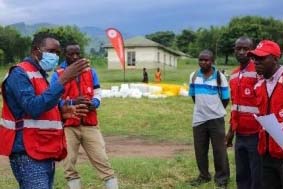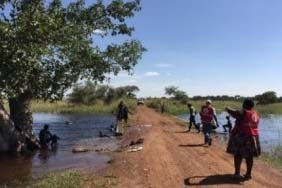What did SHEAR learn?
Putting stakeholder needs at the centre

Key stakeholders, including at-risk populations, need to be at the centre of research prioritisation, design and delivery. Putting the needs of stakeholders at the centre is critical toachieving programme objectives and to ensuring long-term sustainability. This brief explores key learning from across the SHEAR programme related to stakeholder engagement.
Learning from SHEAR: interdisciplinary collaboration

SHEAR projects are deisnged and implemented as consortia, with partner from diverse institutions and disciplines contributing their expertise. Multi-institutional partnerships help to ensure that research is conceptualised, designed, tested and taken up by critical stakeholders embedded in relevant insitutional, political, social and economin systems. This brief outlines learnings relating to interdisciplinary collaborations.

During the 2022 finale event for the SHEAR programme, a wide range of SHEAR researchers and practitioners came together to discuss afeas of outstanding challenges of impactful 'research into action'. This brief summarises those discussions, aiming to help identify priorities for future research and ensuring subsequent 'research into action' programmes build on the learning and advances made by SHEAR.

Effective investment in research can enhance disaster preparedness and resilience, saving lives and protecting communities. This brief explores key learning from across the SHEAR programme related to funding sustainable, high-impact research to improve disaster resilience.
